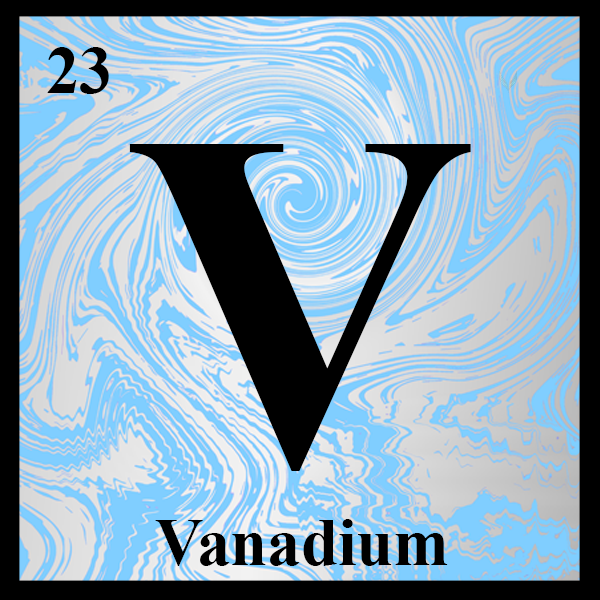What is Vanadium?
Vanadium is a silver-grey corrosion-resistant transition metal with a blue undertone. It's atomic number is 23 and it occurs as a solid in it's standard state.
It’s safe to say that; it has the “blue steel” appearance of the metals. Vanadium is necessary for most species, including humans; however, we only need 0.01 milligrams daily to fulfill our needs.
Vanadium supplements are used as medicine for treating illnesses such as diabetes, low blood sugar, high cholesterol, heart disease, tuberculosis, syphilis, a form of “tired blood” (anemia), and water retention (edema). It’s also used as a supplement for improving athletic performance in weight training.
Vanadium’s corrosion-resistant properties make it ideal for use as a steel additive in manufacturing. It is mainly used to produce specialty steel alloys such as high-speed tool steels and some aluminum alloys. It’s obtained by reducing vanadium(V) oxide with calcium in a pressure vessel. Vanadium of high purity can be obtained by reducing vanadium(III) chloride with magnesium.
Vanadium is relatively abundant as it can be found in over 200 different minerals but is rarely found as a free element.
Click here to see the complete list:
IMA-recognised Minerals that include essential V
Another exciting use of Vanadium is as a chromophore (an atom or group whose presence is responsible for the color of a compound.) in gemstones. For example, V3+ causes the green color in tsavorite garnet and some emeralds and contributes to the color of tanzanite. VO2+ causes bright blue color in cavansite and green color in some fluorapophyllite.
| General Properties | |
|---|---|
| Symbol: | V |
| Atomic Number: | 23 |
| Standard atomic weight (Ar): | 50.9415(1) |
| Electron configuration: | [Ar] 3d3 4s2 |
| Physical Properties | |
|---|---|
| Standard State: | solid |
| Bonding Type: | metallic |
| Melting Point: | 2183 K |
| Boiling Point: | 3680 K |
| Density: | 6.11 g/cm3 |
| Metal/Non-Metal: | transition metal |
| Atomic Properties | |
|---|---|
| Electronegativity (Pauling scale): | 1.63 |
| Atomic Radius: | 171 pm |
| Ionic Radius: | 79 pm (+2) |
| 1st Ionization energy: | 651 kJ/mol |
| 1st Electron affinity: | -51 kJ/mol |
| Oxidation States: | -1,2,3,4 |

